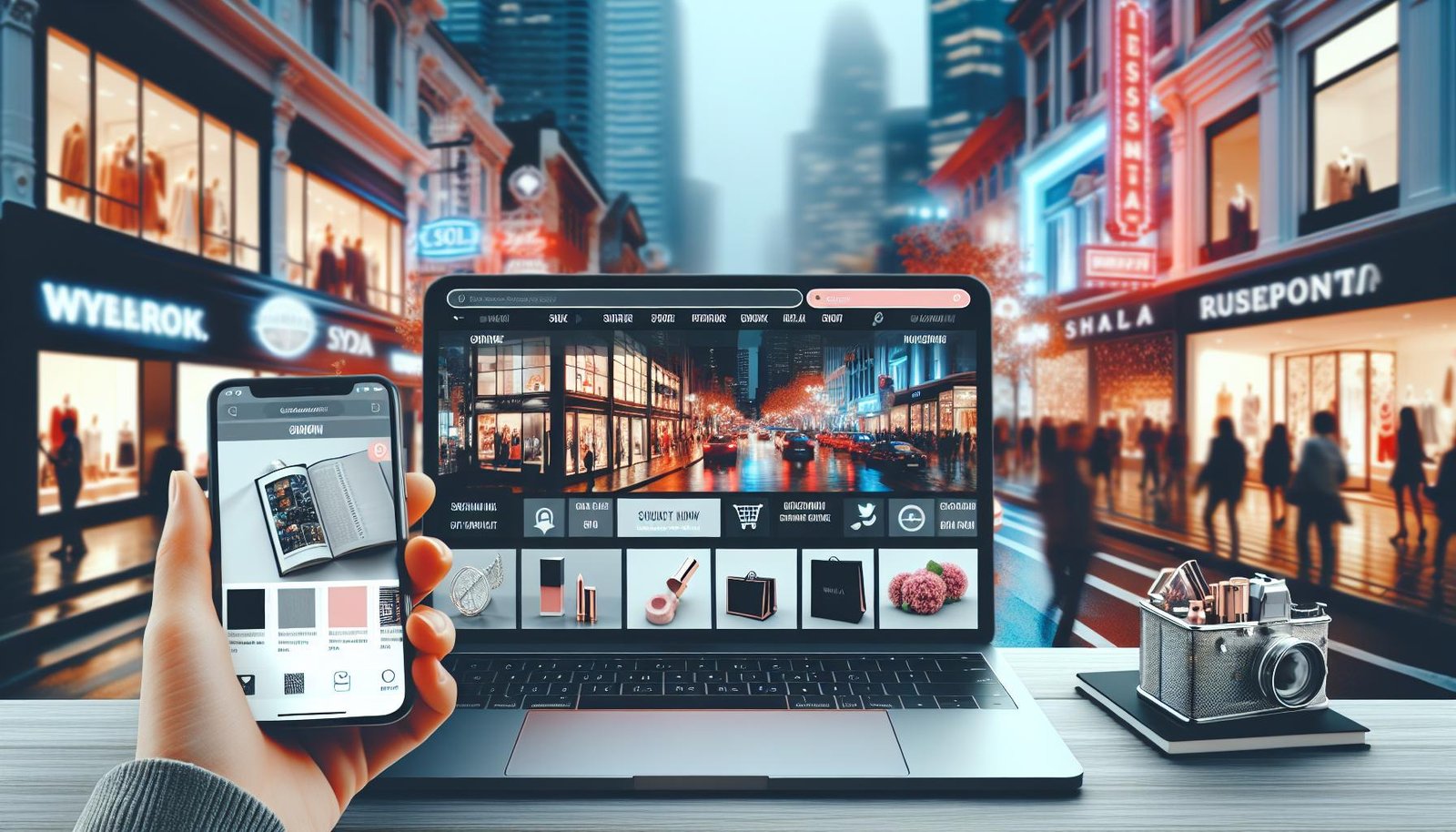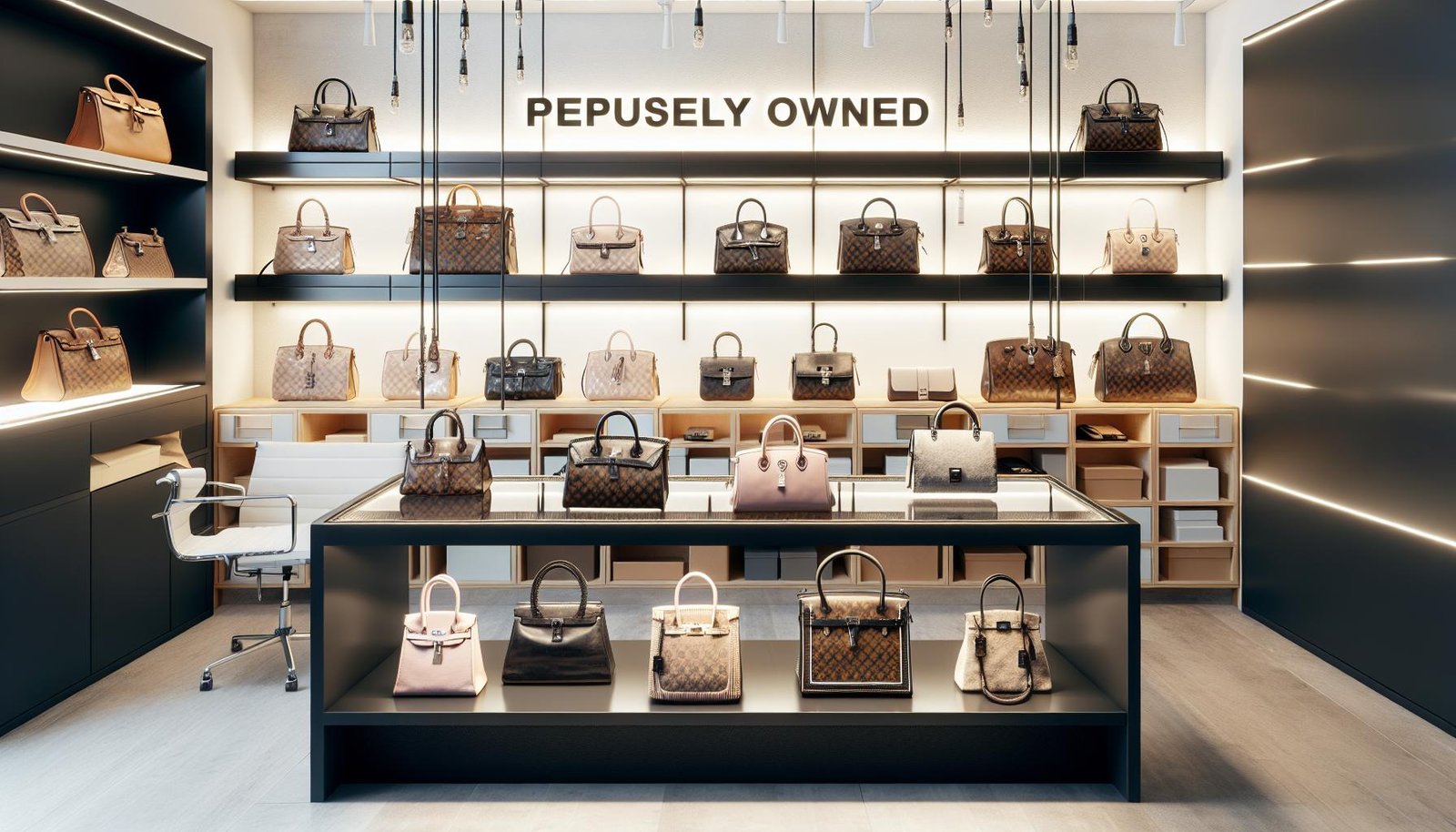I’ve always been fascinated by the allure of luxury brands. Their ability to create an aura of exclusivity and elegance is something I’ve admired and, let’s be honest, envied. It’s this fascination that led me down the path of exploring how to build a luxury lifestyle e-commerce store. The idea of crafting an online space that mirrors the sophistication and charm of high-end boutiques is both exciting and daunting.
Starting this journey, I quickly realized that creating a luxury e-commerce store is more than just listing expensive products. It’s about weaving a narrative that resonates with your audience, creating an experience that transcends the ordinary. It’s about making each visitor feel special, like they’re part of an exclusive club. So, I’m here to share what I’ve learned and guide you through the process of building your own luxury lifestyle e-commerce store. Let’s embark on this journey together and turn that dream into a dazzling reality.
Understanding the Luxury Lifestyle Market
Building on my deep fascination with luxury brands, I’ve learned that comprehending the luxury lifestyle market is a fundamental step in crafting an exclusive e-commerce store. This market is distinct not only in the quality and price of the products but also in the expectations and behaviors of its clientele. It’s about understanding the nuances that appeal to those who seek more than just a product—they’re investing in a lifestyle.
The luxury market thrives on exclusivity. Customers are looking for products that not only offer superior quality but also communicate a certain status and sophistication. Brands such as Louis Vuitton, Gucci, and Rolex have mastered this art, offering items that signify more than their material value. For my store, pinpointing these qualities means curating a collection that embodies exceptional craftsmanship, innovation, and heritage.
A critical aspect of this market is its focus on the experience. Luxury consumers expect an unparalleled level of service and personalization. This means integrating highly personalized services, from bespoke product offerings to exceptional customer support, is paramount. For instance, providing personalized shopping advice or offering exclusive access to new collections could set my store apart. It’s about creating an environment where shopping feels like a privilege.
Understanding consumer behavior is another key element. Luxury shoppers often seek items that reflect their personal identity or aspirations. They are not just buying a product; they’re buying into what that product represents—be it success, sophistication, or exclusivity. This insight is crucial for me as it guides the marketing strategies and product selection for my e-commerce store. It involves diving deep into the psychology of my potential customers to tailor messages that resonate with their desires and aspirations.
Finally, sustainability has emerged as a significant factor in the luxury lifestyle market. Conscious consumers demand brands that are not only luxurious but also responsible. They are willing to invest in products that are ethically produced and environmentally friendly. Incorporating sustainable practices into my store, from sourcing ethically made products to minimizing carbon footprint in operations, can be a unique selling proposition that appeals to modern luxury consumers.
Foundational Steps to Build a Luxury Lifestyle E-commerce Store

Understanding the nuances of the luxury lifestyle market has given me a clear perspective on how vital it is to establish an e-commerce store that not only sates the desire for high-end products but also envelops consumers in an aura of exclusivity and personalized service. Building such a store entails several foundational steps, each critical to carving out a niche in the competitive luxury market.
1. Market Research and Target Audience Identification:
Before starting, I dive deep into market research to identify the specific needs and preferences of my target audience. Luxury consumers seek uniqueness, so understanding their desires, from sustainably produced goods to bespoke services, shapes my store’s focus. This stage involves analyzing competitors, understanding market trends, and identifying gaps that my store can fill.
2. Business Plan Development:
Creating a comprehensive business plan is next. This plan outlines my store’s vision, mission, and value proposition, emphasizing how it stands apart in offering exclusive luxury experiences. It includes financial projections, marketing strategies, and operational plans, ensuring a roadmap to success is clear and attainable.
3. Crafting a Unique Brand Identity:
A luxury e-commerce store needs a compelling brand identity that resonates with its high-end consumers. This identity, encompassing a memorable logo, a sophisticated color scheme, and an engaging brand story, sets the tone for the entire shopping experience. It’s essential for attracting and retaining discerning customers.
4. Selection of High-Quality Products:
The cornerstone of a luxury e-commerce store is its product selection. I focus on curating high-quality, artisanal, or limited-edition items that promise exclusivity. Partnering with reputable suppliers and designers, I ensure that every product meets the luxury standards my target audience expects.
5. Website Design and User Experience:
In constructing the website, my priority is marrying aesthetics with functionality. A luxury e-commerce site must offer an intuitive, seamless navigation experience while showcasing products in the best light. High-resolution images, detailed product descriptions, and an elegant layout contribute to an immersive shopping environment.
6. Implementing Robust E-commerce Solutions:
Selecting the right e-commerce platform is critical for managing online transactions securely and efficiently. I opt for platforms offering advanced features such as inventory management, analytics, and customer relationship management tools, tailored to luxury e-commerce operations.
Key Elements of a Successful Luxury E-commerce Website

Diving deeper into the journey of creating a luxury lifestyle e-commerce store, it’s important to pinpoint the key elements that differentiate a successful luxury e-commerce website from the average online shopping experience. These elements not only attract discerning customers but also retain them, fostering loyalty in a competitive market.
High-Quality Product Imagery and Descriptions
The first element I focus on is presenting high-quality product imagery and descriptions. Luxury shoppers expect a visual feast, mirroring the in-store experience as closely as possible. This means investing in professional photography that showcases products in their best light, offering multiple angles and, if possible, a 360-degree view. Additionally, detailed descriptions that convey the luxury and exclusivity of each item are non-negotiable. They should highlight unique features, craftsmanship, and the story behind the brand to connect emotionally with the target audience.
Personalized Shopping Experience
Next, providing a personalized shopping experience is paramount. Luxury consumers value exclusivity and individual attention. Implementing features like personalized product recommendations, bespoke tailoring options, or private shopping sessions via video call can significantly enhance the customer experience. Leveraging data analytics to understand customer preferences and behaviors enables a more tailored experience, making shoppers feel valued and understood.
Exceptional Customer Service
Exceptional customer service is the third crucial element. Luxury shoppers have high expectations for service, often seeking immediate and comprehensive support. Offering round-the-clock customer service through multiple channels—live chat, email, phone, and even social media—ensures that customers can reach out whenever they need. Additionally, providing straightforward returns and exchanges, along with a personal touch such as a dedicated service representative, can make all the difference.
Seamless Checkout Process
A seamless checkout process is another vital component. Luxury e-commerce sites must ensure that the elegance of their store extends to the checkout experience. This involves minimal steps to purchase, a variety of secure payment options, and clear communication about shipping and delivery. Simplifying the checkout process reduces cart abandonment and enhances the overall shopping experience.
Mobile Optimization
Lastly, mobile optimization can’t be overlooked. With a significant portion of luxury shoppers using smartphones and tablets to browse and shop, a luxury e-commerce website must deliver a flawless experience on mobile devices. This means responsive design, fast load times, and easy navigation. Ensuring the mobile experience is on par with desktop is essential in meeting the demands of today’s luxury consumer.
Marketing Strategies for Luxury E-commerce
Building on the foundation of creating a seamless, high-quality online shopping experience, let’s dive into the pivotal marketing strategies that can elevate a luxury lifestyle e-commerce store. Excelling in this competitive niche requires not just an understanding of luxury products but also how to effectively market them to discerning customers.
Leverage High-Quality Content: For luxury brands, storytelling through high-quality content is key. This includes visually stunning photos and engaging product descriptions that do more than just describe; they evoke feelings and present a lifestyle. Luxury buyers aren’t just purchasing a product, they’re buying into an aspirational lifestyle, and the content should reflect this.
Utilize Influencer Collaborations: Aligning with influencers who resonate with the luxury lifestyle is a powerful way to build brand prestige and reach. I find that collaborations with influencers who already embody the brand’s values and aesthetics can authentically engage prospective customers and create aspirational content that drives desire.
Personalize Customer Engagements: Personalization goes beyond product recommendations. I recommend using data analytics to understand customer preferences and tailor marketing messages accordingly. Sending personalized emails, offering exclusive pre-access to collections, or inviting select customers to private events can make customers feel special and valued.
Implement Retargeting Strategies: Given the high consideration factor in luxury purchases, retargeting is an effective way to keep the brand top-of-mind. I’ve seen success with retargeting ads that remind potential customers of the products they viewed but didn’t purchase, encouraging them to revisit and complete their purchase.
Prioritize SEO with a Luxury Twist: SEO strategies tailored to the luxury market can significantly increase visibility. This means optimizing for keywords that resonate with luxury buyers but also ensuring the website experience reflects luxury standards. Fast-loading pages, easy navigation, and mobile optimization are just as crucial here.
Engage Through Social Media Platforms: Luxury brands can benefit from a strong presence on social media platforms, especially those that are highly visual like Instagram and Pinterest. These platforms offer unique opportunities to showcase luxury lifestyles, launch new collections, and interact with customers in a more personal and direct manner.
Offer Exclusive Experiences: Exclusive experiences can serve as a unique selling proposition. This could include early access to new collections, limited-edition products, or exclusive online events. By offering something unique, luxury e-commerce stores can enhance their allure and prestige.
Maintaining and Growing Your Luxury Brand Online

After establishing my luxury e-commerce store with a foundation of exceptional customer experience and impactful marketing strategies, I’ve learned that maintaining and growing a luxury brand online requires continuous effort and strategic planning. Building on our foundation, here are some proven tactics I implement to keep my brand thriving in the competitive luxury market.
Engaging With Your Audience Regularly
Consistency is key when it comes to audience engagement. I make it a priority to:
- Post regularly on social media, sharing stories that resonate with my brand’s luxury aesthetic and values. Platforms like Instagram and Facebook are perfect for visually showcasing my products while engaging with my audience through comments and messages.
- Send out personalized emails that go beyond promotions, including content that adds value, like behind-the-scenes looks or stories about the craftsmanship behind my products. This keeps my brand at the top of my customers’ minds and reinforces the exclusivity and prestige of the luxury shopping experience.
Utilizing Data to Refine Strategy
Data-driven decisions have been crucial to my online store’s growth. By:
- Analyzing website and social media analytics, I understand my audience’s behavior and preferences, allowing me to tailor my content and interactions to meet their expectations better.
- Collecting customer feedback through surveys and reviews helps me pinpoint areas for improvement and opportunities to innovate, ensuring my brand stays ahead in the luxury market.
Investing in Emerging Technologies
Staying ahead of the curve means being open to innovation. I explore:
- AR (Augmented Reality) and VR (Virtual Reality) to offer my customers unique and immersive online shopping experiences. These technologies help my products stand out by providing a closer look at the luxury items I offer.
- AI-driven personalization, using algorithms to personalize shopping experiences, from product recommendations to personalized email content, enhancing the luxury feel of shopping with my brand.
Continuing Education and Collaboration
The luxury market is ever-evolving, and so am I. To stay relevant and competitive, I:
- Attend industry conferences and webinars to keep up with the latest trends and strategies in luxury e-commerce.
- Collaborate with other luxury brands and influencers, which not only exposes my brand to a broader audience but also creates opportunities for exclusive partnerships and co-branded products that appeal to luxury shoppers.
Conclusion
Building a luxury lifestyle e-commerce store is an exciting journey that combines the art of branding with the science of digital marketing. I’ve shared the foundational elements and the strategies to not only launch but also grow your luxury brand in the digital space. Remember, the key is in the details—from the visuals that capture the essence of your brand to the personalized experiences that make your customers feel special. Staying ahead of the curve by embracing new technologies and continuously engaging with your audience will ensure your luxury brand not only survives but thrives. Let’s take these insights and turn them into action. Here’s to creating an e-commerce experience that’s as luxurious as the products you’re selling!
Caterina has traveled the world first class, while earning money in side hustles like freelance writing, etsy stores and affiliate marketing. She loves helping other women achieve their financial dreams by teaching them how to plan and fund them.




